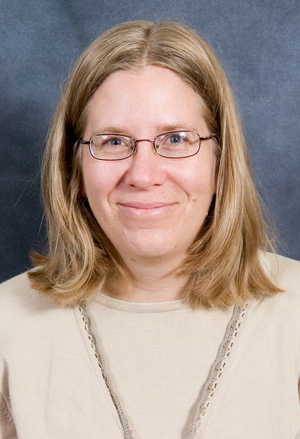CSC faculty member part of Chadron Library film festival

CHADRON – A member of the Chadron State College faculty and a High Plains Herbarium volunteer are bringing their expertise to the seventh annual Trading Stories Film Festival at the Chadron Public Library, focused on Oglala Lakota spiritual leader Nicholas Black Elk.
The festival, set for Thursday through Saturday at the library, includes a presentation by CSC geology professor Dr. Michael Leite on Friday at 6 p.m., prior to screening of the 2020 documentary, Walking the Good Red Road, about Black Elk’s life.
On Saturday at 3 p.m. Dr. Susan Rolfsmeier, former adjunct professor in the Department of Applied Sciences and Herbarium volunteer, will discuss medicinal plants of the High Plains, as a lead in to the 5 p.m. screening of the 1970 movie, Little Big Man.
Black Elk (Hehaka Sapa) is perhaps best known through the book Black Elk Speaks by John G. Neihardt. Born in about 1863, Black Elk was present at the Battle of the Little Bighorn in 1876 and survived the Wounded Knee Massacre in 1890. Through the influence of his first wife, he converted to Catholicism in his 40s, but continued to practice Lakota ceremonies.
Black Elk was proposed for sainthood by the Rapid City, South Dakota, diocese of the Catholic Church in 2017. The diocese co-produced Walking the Good Red Road, which first aired on ABC television stations in May 2020.
“(Black Elk) was the bridge that carried his people from Wounded Knee to present times,” said Chadron Library Director Rossella Tesch.
In 2016 the highest point in South Dakota, previously known as Harney Peak, was renamed Black Elk Peak to recognize the significance of the mountain and the Black Hills to the region’s Native Americans.
Leite said his knowledge of the cultural significance of Black Elk Peak is limited, but its geology is fascinating. The mountain is part of an outcrop known as Harney Peak Granite that stemmed from a major geologic event 1.9 billion years ago called the Trans-Hudson Orogeny (THO), a collision of tectonic plates that created a Himalaya-scale mountain range from western Nebraska to northern Saskatchewan and Greenland. Magma injected following the THO formed Harney Peak Granite and associated pegmatite materials that are rich in rare materials like titanium, beryllium, and lithium. Another major geologic event some 60 million years ago, the Laramide uplift, made those minerals, and the gold for which the Black Hills is famous, accessible to us today, Leite said.
Rolfsmeier and her husband, Steve, director of the High Plains Herbarium at CSC, are specialists in the study of relationships among plant groups. Though not trained in medicinal plants, they are interested in studying plant diversity of the region, and find that people often want to know about the practical value of plants for food, medicine and commercial use.
“Tapping into people’s interests is a way to reach out to the public and make learning about plants appealing,” Rolfsmeier said.
Much of the information the Rolfsmeiers have prepared for the festival presentation was compiled by Melvin Gilmore and Father Eugene Buechel, who conducted extensive interviews with Native American people about the names of plants and their traditional uses.
“The foundation of today’s knowledge comes from the indigenous peoples who lived in the area and relied on the plants,” Rolfsmeier said.
Building on work by CSC professor Dr. George Morgan, former Herbarium director Dr. Ron Weedon in 1990 completed a paper about Oglala use of medicinal plants, and noted that sage, cedar, sweet flag and sweet grass were the most common plants in use, said Rolfsmeier.
Interest in plant use remains high, according to Steve Rolfsmeier, who often fields questions on the topic when conducting plant walks. The High Plains Herbarium has a broad range of literature relating to native plants but the collection is currently in storage in anticipation of being moved into the new Herbarium library when renovation of the Math Science building is completed, he said.
The film festival, sponsored by the Chadron Library Foundation and supported by the Dawes County Travel Board, began in 2014 to highlight the Native American history of the region and call attention to the library’s extensive Indigenous Peoples of North America collection of books, films and music.
“Native Americans are a vital part of the (Nebraska) Panhandle’s history, life and culture,” Tesch said. “Native American culture is often ignored and disparaged. When people see the movies, they are moved learning what Native American’s have gone through in the last 100 years. They are surprised by the beauty of the art and music.”
Tesch said she hopes this year’s festival will make people aware of the many components of Black Elk’s life and the spiritual messages he conveyed. Through the horror of battles and loss of many of his people to conflict, famine and disease, Black Elk persevered, said Tesch.
“He held onto his culture and moral beliefs, and looked for other ways to continue on,” she said
A complete schedule of the film festival can be found at trading-stories-film-festival.
—George Ledbetter
Category: Campus News, Employee Awards & Achievements

